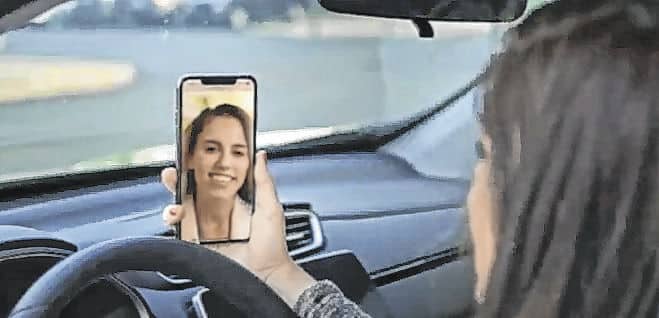
HANCOCK COUNTY — In his 32 years as a physician, Dr. Michael Fletcher had never examined a patient who was sitting atop a bulldozer.
Then 2020 came along.
Fletcher said the exam he conducted virtually on a tablet last year — with his patient seated on a bulldozer parked at a worksite — was the most unusual one he’s ever had, but it’s just a sign of the times in a world upended by COVID-19.
It’s no surprise many people have put off routine doctor’s appointments over the past several months, out of fear of being exposed to the coronavirus, said Fletcher, vice president and chief medical officer for Hancock Physician Network.
Yet he and fellow physicians want to make sure patients get their routine and follow-up visits rescheduled this year.
“Several individuals ended up with appointments canceled early last year and have fallen off the radar, so we’ve been using electronic records to look for individuals who have not been seen so we can get them back in,” Fletcher said last week.
The physician said patient visits can be broken down into three types: routine care, follow-ups and urgent or acute-care visits. While acute-care visits tend to be more critical, routine care and follow-up appointments are essential in maintaining good health, he said.
According to the Centers for Disease Control and Prevention, in a report posted at cdc.gov, an estimated 41% of U.S. adults delayed or avoided medical care between March and September last year.
That includes 12% of patients delaying or avoiding urgent or emergency care, and 32% delaying or avoiding routine care.
The CDC concluded that delayed or avoided medical care might increase morbidity and mortality associated with both chronic and acute health conditions. The agency said delaying or avoiding urgent or emergency care was more common among people with disabilities and people with two or more underlying health conditions.
Patient visits within Hancock Physician Network dropped 15% to 20% in the first few months after COVID hit, said Brian Muckerheide, the network’s chief operating officer.
As of late November, the network was still running about 5% below its normal volume of patients for that time of year, he said.
Muckerheide and physicians like Fletcher are urging patients to reschedule their appointments to ensure optimal health.
“Due to our safety protocols, we highly recommend patients see their doctor for preventive and routine chronic care visits, as well as when they are feeling sick,” Muckerheide said.
“Most of these visits will be in-person visits, but in some cases virtual visits may be appropriate either by the patient’s choice or the physician’s judgment,” he said.
Fletcher said mammograms, colonoscopies and other routine exams should be a top priority.
A breast surgeon recently told Fletcher he’s been seeing more breast cancers, which he speculated could potentially be attributed to a decline in routine breast exams last year. “He was surmising that it could have been that people put (exams) off for a time, and now they’re creeping up, but I don’t know that we have any good, hard evidence on that yet,” Fletcher said.
While routine screenings are essential, he urges patients not to postpone ongoing care of chronic medical conditions like diabetes and hypertension.
“With diabetes, it’s very important you keep your blood sugars under good control,” he said.
“High blood pressure is another one that could go uncontrolled. It’s something that will be detrimental over time, over many years, but it’s also asymptomatic. You could feel fine but have an elevated blood pressure and cause damage to blood vessels,” Fletcher said.
The longtime physician works to assure patients that it’s safe to return to doctor’s offices for routine care.
“We have measures in place so everyone can feel very safe and secure,” he said. “Everybody wears masks, and we observe social distancing. I really think the hospital is a safe place to be,” he said.
While most physicians have resumed in-person appointments, Muckerheide said virtual visits are still offered at a physician’s discretion.
Fletcher thinks virtual visits are here to stay.
While physical exams are impossible to do virtually, Fletcher said he’s been able to peek inside a patient’s throat, or have them press their flesh so he can look for signs of fluid retention during video calls.
The most important thing is that patients keep in touch with doctors and stay abreast of their health, he said.
Just consider the man whose exam took place from the bulldozer, Fletcher pointed out.
“It really struck me that had I had asked him to come in instead of offering a virtual visit, that he would have probably had to take a few hours off from work and might not have come in to see me. So I do think in our very mobile, busy society that it does introduce a level of convenience, and it’s really a nice feature to have.”




